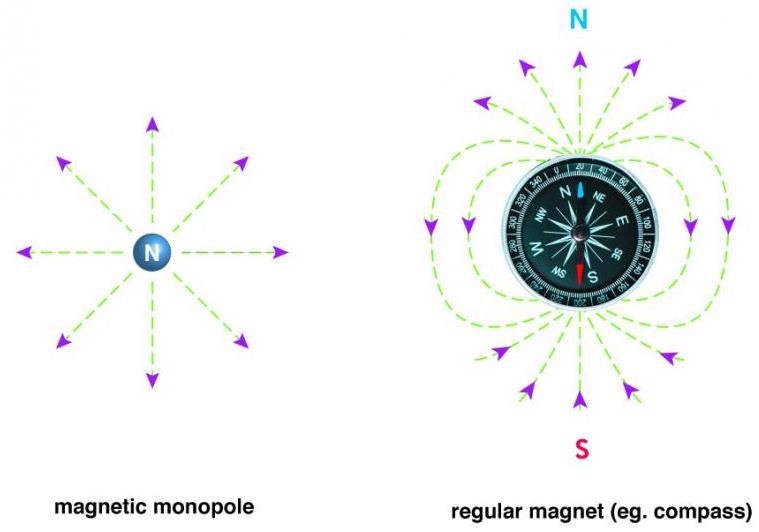Reviewed by Alex SmithMay 27 2022
According to a recent study published in Physical Review Letters, some of the world’s most powerful particle accelerators have helped scientists gather new leading limits on the presence of long hypothesized magnetic monopoles from the collisions of intense cosmic rays impacting the Earth’s atmosphere.
 Schematic illustration of magnetic compass and hypothetical magnetic monopole. Image Credit: Kavli IPMU.
Schematic illustration of magnetic compass and hypothetical magnetic monopole. Image Credit: Kavli IPMU.
Magnets have a broad range of uses in everyday life, from TVs and computers to children’s toys. Any magnet, such as a navigation compass needle with north and south poles, may be broken in half to produce two smaller two-pole magnets.
This mystery has eluded researchers for decades since 1931 when physicist Paul Dirac hypothesized the existence of one-pole “magnetic monopoles’’ – particles similar to electrons but with a magnetic charge.
An international team of researchers, including Volodymyr Takhistov of the University of Tokyo’s Kavli Institute for the Physics and Mathematics of the Universe (Kavli IPMU), studied data from a variety of terrestrial experiments to see if magnetic monopoles exist. They conducted the most sensitive searches to date for monopoles over a broad range of possible masses. The researchers focused on an uncommon source of monopoles: eons-old atmospheric collisions of cosmic rays.
The multidisciplinary research required the collaboration of experts from a variety of fields, including accelerator physics, neutrino interactions, and cosmic rays.
Collisions of cosmic rays with the atmosphere have already helped advance research, particularly in the study of invisible neutrinos. Takaaki Kajita, a Kavli IPMU Senior Fellow, won the Nobel Prize in Physics in 2015 for discovering that neutrinos oscillate in flight, hinting that they have mass, using the Super-Kamiokande experiment.
The team began working on monopoles after being motivated in part by the findings of Super-Kamiokande. Light monopoles possessing masses around the electroweak scale, which can be easily accessed by ordinary particle accelerators, were particularly fascinating.
The researchers created a steady stream of light monopoles pouring down on several terrestrial experiments by simulating cosmic ray collisions, similar to particle collisions at CERN’s LHC.
This one-of-a-kind source of monopoles is particularly fascinating since it is unaffected by any pre-existing monopoles, such as those that may have remained as relics from the early Universe, and it spans a wide range of energies.
The researchers discovered unexpected monopole limits across a wide range of masses, particularly those outside the reach of standard collider monopole searches, by re-analyzing data from a wide variety of past experimental monopole searches.
The researchers’ findings and the source of the monopoles researchers analyzed will serve as a valuable standard for understanding future monopole searches in terrestrial laboratories.
On May 17th, 2022, the results of their research were reported in Physical Review Letters.
Journal Reference:
Iguro, S., et al. (2022) Monopoles from an Atmospheric Fixed Target Experiment. Physical Review Letters. doi.org/10.1103/PhysRevLett.128.201101.